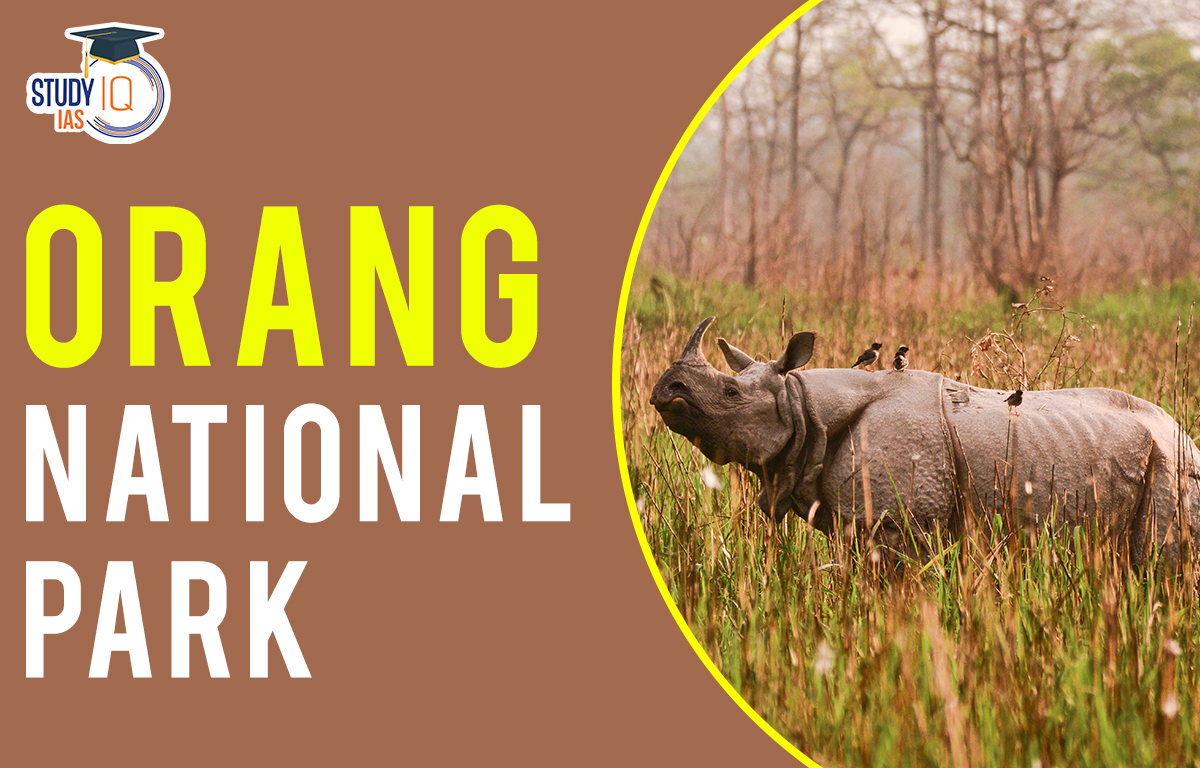Table of Contents
Orang National Park
The Orang National Park, also known as Rajiv Gandhi Orang National Park, is 78.81 square kilometers in size and is situated in the Assamese districts of Darrang and Sonitpur on the north side of the Brahmaputra River. The UPSC Syllabus includes Orang National Park and all national parks as a significant topic of Environment subject. The UPSC Mock Test can help candidates prepare for the exam with more precision.
Orang National Park History
Orang was designated as a game refuge in 1915. To comply with Project Tiger’s criteria, the game reserve was placed under the management of the State Forest Department’s wildlife division. In 1999, it was designated as a national park. The park has a total size of about 81 km2. The Orang tribe, who abandoned this territory, now calls it home. 3,000 millimeters of rain falls annually on average.
Also Read: Jaldapara National Park
Orang National Park in Details
On April 13, 1999, Orang National Park was created as a national park after first becoming a sanctuary in 1985. Given that both parks are home to the Great Indian One-Horned Rhinoceros and have comparable landscapes made up of marshes, streams, and grasslands, they are also referred to as the Mini Kaziranga National Park (IUCN site). It is also referred to as the “mini” Kaziranga National Park (IUCN site) due to the comparable marsh, stream, and grassland landscape of the two parks. There are no other rhinoceros strongholds on the north side of the Brahmaputra River. The park is bordered by the Pachnoi River, Belsiri River, and Dhansiri River, which flow into the Brahmaputra River.
Also Read: Dachigam National Park
Orang National Park Flora
Bombax ceiba, Dalbergia sisoo, Sterculia villosa, Rewia nudiflora, Zizyphus jujube, Litsaea polyantha, Phragmites karka, Arundo donax, Imperata cylindrical, Ipomea reptans, and Enhydra flushians are among the flowering plants in the Orang National Park.
Orang National Park Fauna
Indian One-Horned Rhinoceros, Pygmy Hog, Royal Bengal Tiger, Wild Buffalo, Asiatic Elephant, Wild Boar, Leopards, Barking Deer, Rhesus Macaque, Small Indian Civet Otter, Gangetic Dolphin, and Fishing Cat/Jungle Cat are among the animals found in Orang National Park’s fauna.
Orang National Park UPSC
The Darrang and Sonitpur districts of Assam contain the Orang National Park, which is situated on the Brahmaputra River’s northern shore. In 1985, it was created as a sanctuary, and in 1999, it was made a national park. It has a diverse range of plants and animals, including Bengal tigers, Asian elephants, wild water buffalo, and big Indian rhinoceros. The Kaziranga Orang Riverine Landscape benefits from Orang’s strategic location on the river’s northern shore. Students can read all the details related to UPSC visiting the official website of StudyIQ UPSC online Coaching.


 Goods and Services Tax (GST), Objectives...
Goods and Services Tax (GST), Objectives...
 World Oceans Day 2025, History, Theme, S...
World Oceans Day 2025, History, Theme, S...
 World Environment Day 2025, Theme, Histo...
World Environment Day 2025, Theme, Histo...





















